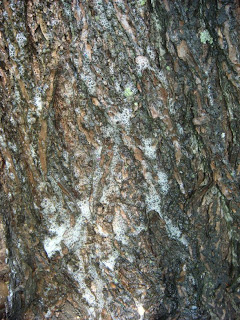Outdoor Observer: Quill Pigs
 |
| A porcupine scuttling through the Vermont woods. |
I’ve been seeing lots of porcupines lately while wandering in the woods, watching the movement of white- tailed deer and the changing of seasons here in Vermont. Evening visits to Gifford Woods State Park and Allis State Park are overlapping with porcupine activity more and more.
Porcupines don’t vanish out of view quickly like coyotes or other nocturnal animals. I frequently see them because they are not in a hurry to get away from me; they waddle along very slowly. Their defense is not speed or agility, but the prickly quills garnishing their backsides. If you have experienced a curious dog and a close porcupine encounter, you already know why I sweep the trail ahead of me carefully with a bright headlamp during evening walks in porcupine territory. I don’t want to find out how it feels to take a shin full of barbed porcupine quills.
There is one porcupine I have been seeing regularly on my favorite walking loop. The very first encounter resulted in the porcupine quickly scurrying up a tree, and me snapping photos of it as it tried to get high above my head. A few evenings later, I came upon this same porcupine. When it saw my bright light, it wedged itself between two large sugar maples, with its quill-covered behind facing me. It’s pretty amazing to see the adaptations animals have for self-preservation.
Speaking of self-preservation, this is an especially interesting time of year for porcupines because it is mating season. This is the one time of year you can hear the animals vocalize. In the darkness they make loud grunts, cries, and squeaks. It can be pretty spooky to hear their noises drift over the dark woods, until you make out the large lump of an arboreal porcupine and discover where the mysterious noise is coming from. The large rodents mate this time of year, and single baby porcupines are born in May or June.
Above: Click to hear a porcupine mating call!
In summer porcupines eat leaves, twigs, and plants such as skunk cabbage and clover. In winter months, they chew through thick bark on trees and eat the cambium layer of the tree. Cambium is a layer under tree bark, the living part of a winter tree, and the portion of the tree that creates all new growth. Cambium is nutrient rich and is a concentrated food source during a time of year when there is not much available food for vegetarians like porcupines. They prefer to feed on pine, fir, cedar, and hemlock trees. Look for large irregular patches of bark stripped from tree trunks with lots of rodent tooth marks.
Porcupines also seek out salt, which can be detrimental to your tools or outhouses. Salt from human perspiration is absorbed into wooden tool handles, so put away that rake or axe—if you leave them out, they could become a porcupine snack. Outhouses have also been known to become victims of hungry porcupines.
Rebecca Roy, Parks Interpretive Program Manager

.jpg)
.jpg)
Comments
Post a Comment
Feel free to let us know what you think.